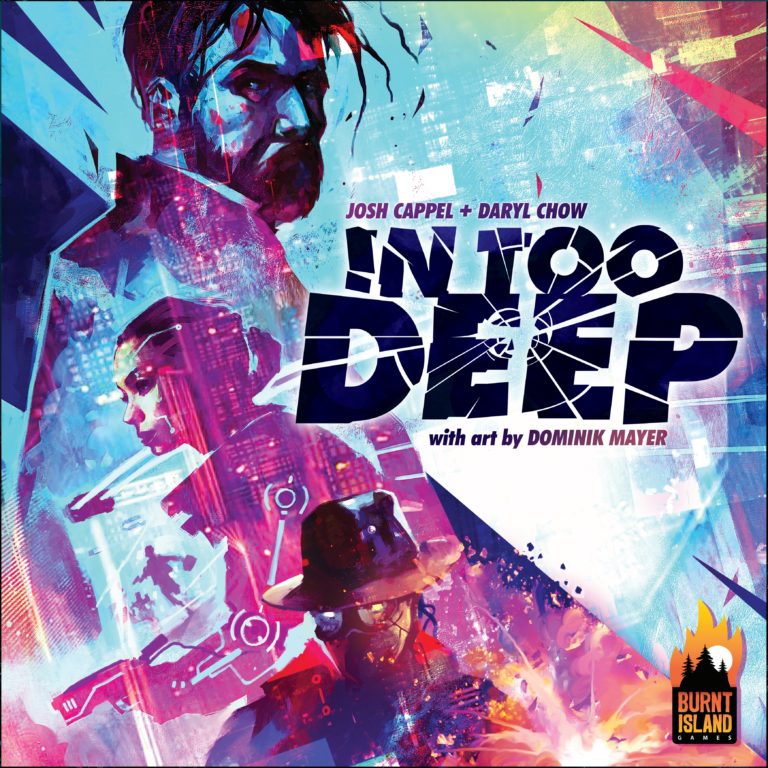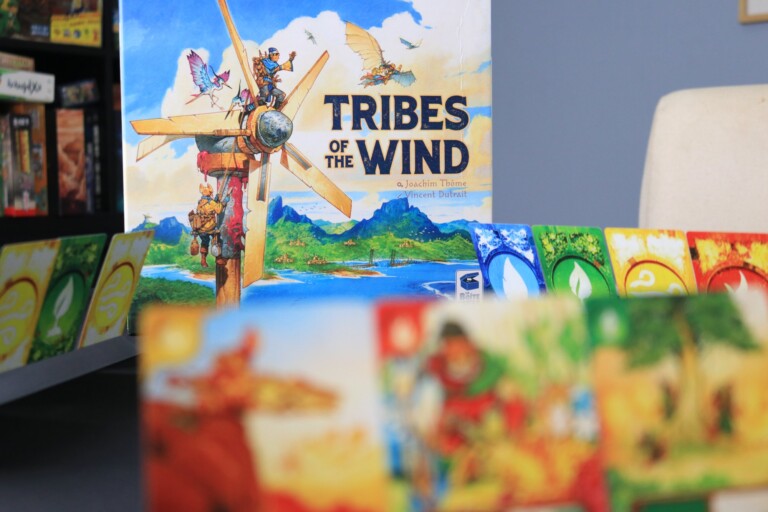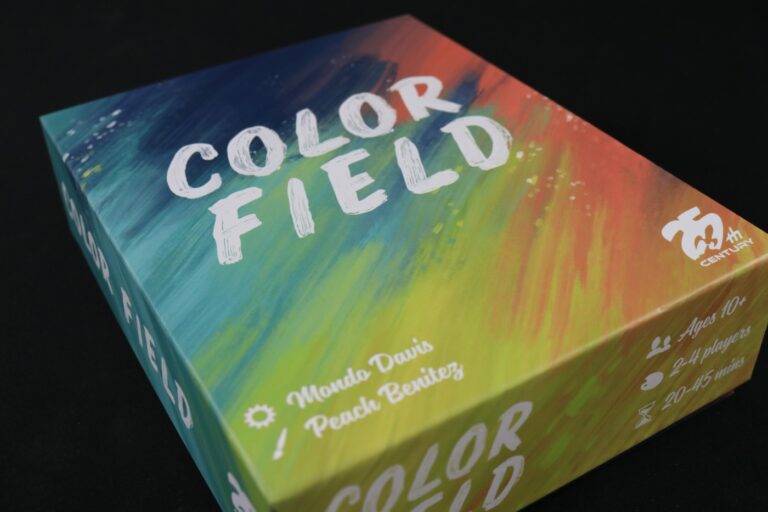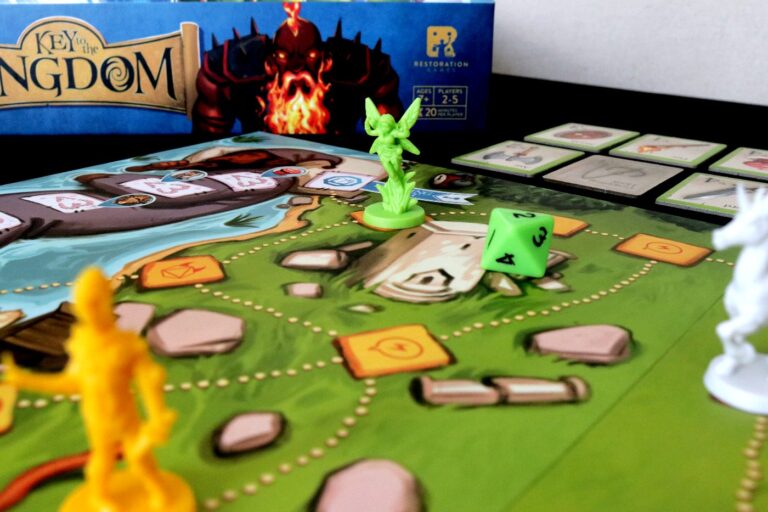Few things are as beautiful as a walk through a gorgeous garden. Tang Garden put the control of curating this beautiful place in the hands of 2 to 4 players. This tile laying game from Thundergryph Games was originally funded on Kickstarter in 2019 and is now available at retail from Lucky Duck Games. So does the gameplay match the beauty of this highly stylized game?
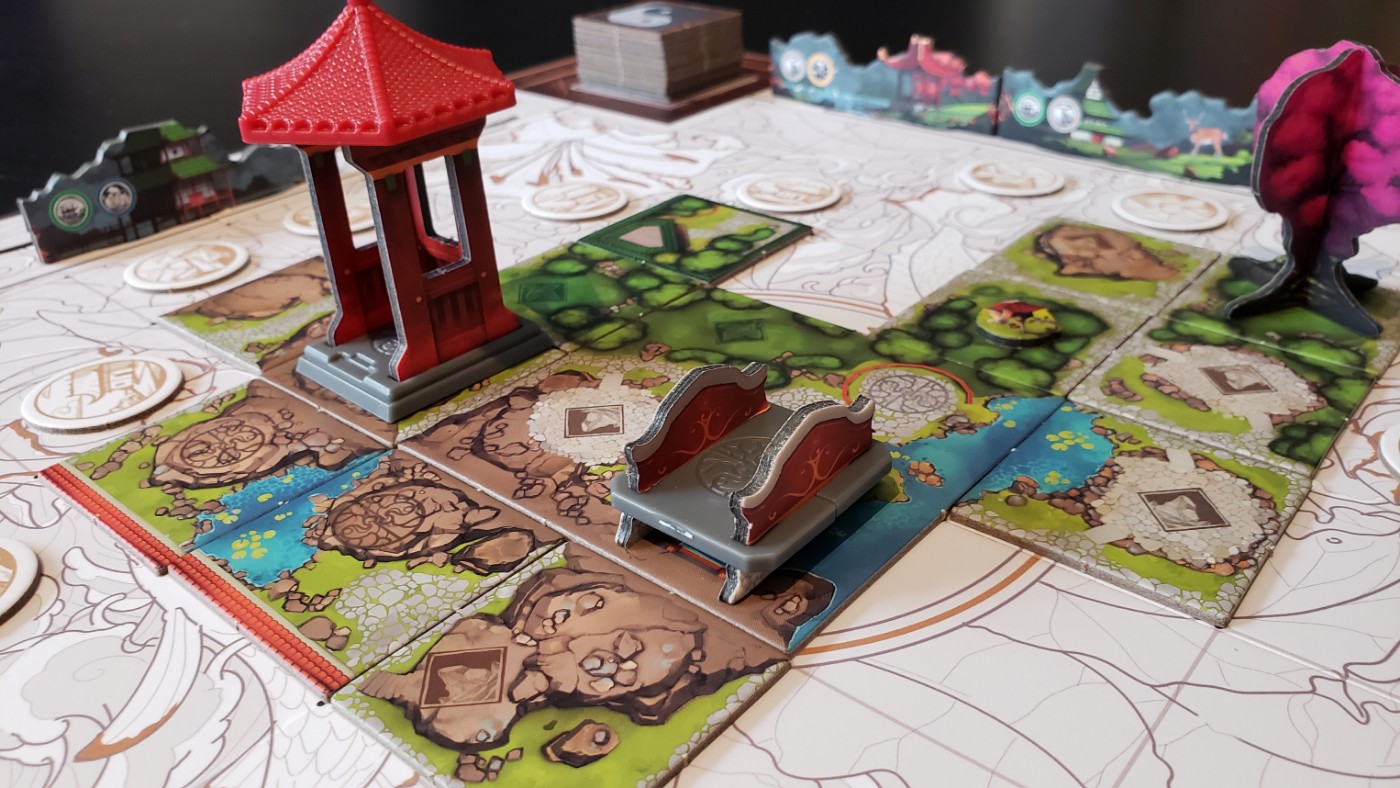
Welcome to the Garden
Throughout the game, players will lay tiles and place decorations throughout the garden. The goal of matching elements on the tiles, creating walking paths and enclosing garden features will earn you coins (prestige points) or movement on the 3 element tracks of your player board. Tang Garden encourages balanced placement of these elements throughout the game which keeps a player from focusing solely on one element.
As the size of the garden expands, players will place scenery around the edges of the board. The garden will attract noblemen to admire the beauty and score end game points based on what those miniatures are looking at on the board.
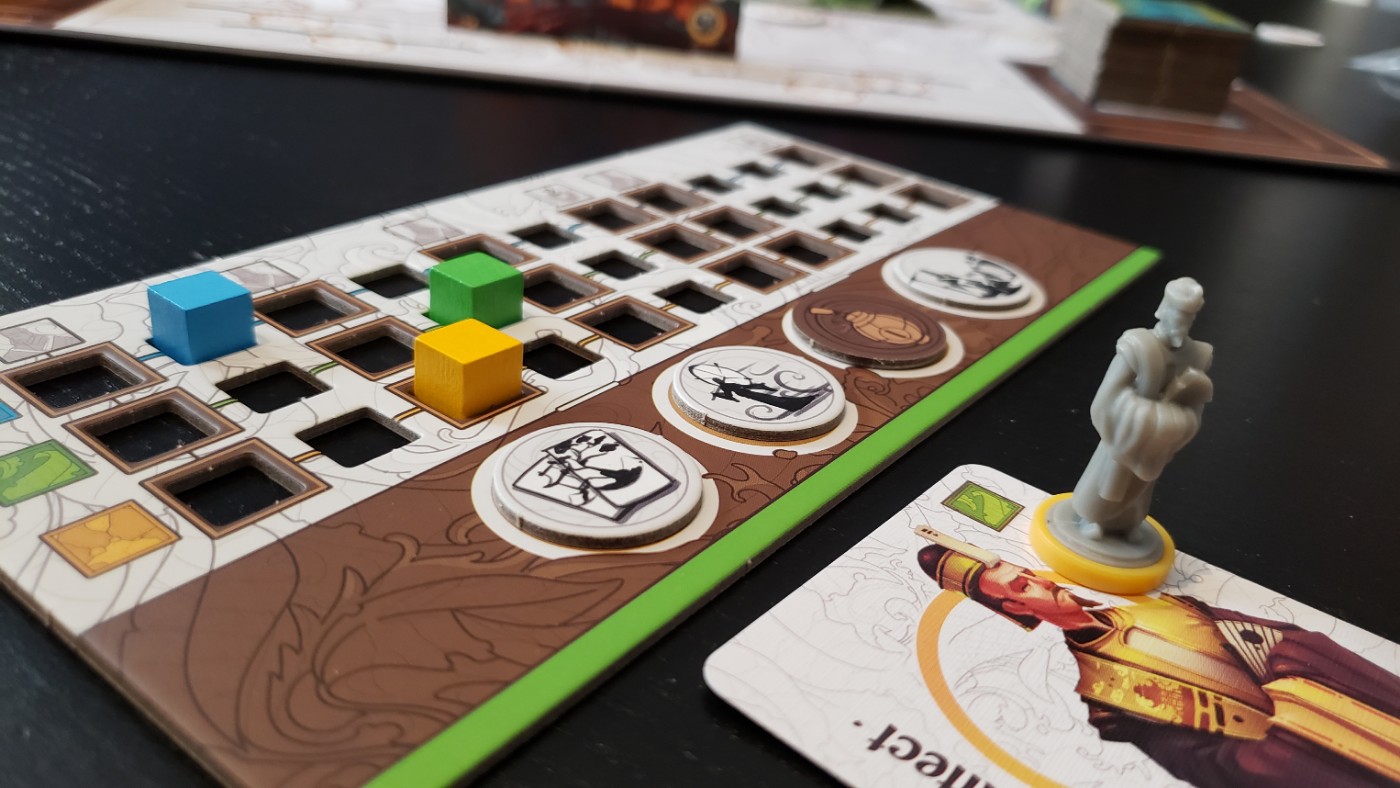
Players are given player boards and a single nobleman to start the game. The player boards are where you track the elements of water, nature, and earth by moving cubes for each element. When those elements pass certain thresholds, you’re given the chance to draft another nobleman and place a nobleman in the garden. Tang Garden awards players coins when they reach the top portions of the player boards.
One element that adds to the beauty of Tang Garden is the decorations that are added throughout the game. Instead of placing a garden tile, players can draft decoration cards and place one in the garden. These include fish, birds, flowers, pavilions, bridges, trees and more. The game does a great job of giving players plenty of options for filling out the board and building points. Most of these decorations score for collecting sets or having the most of a decoration.
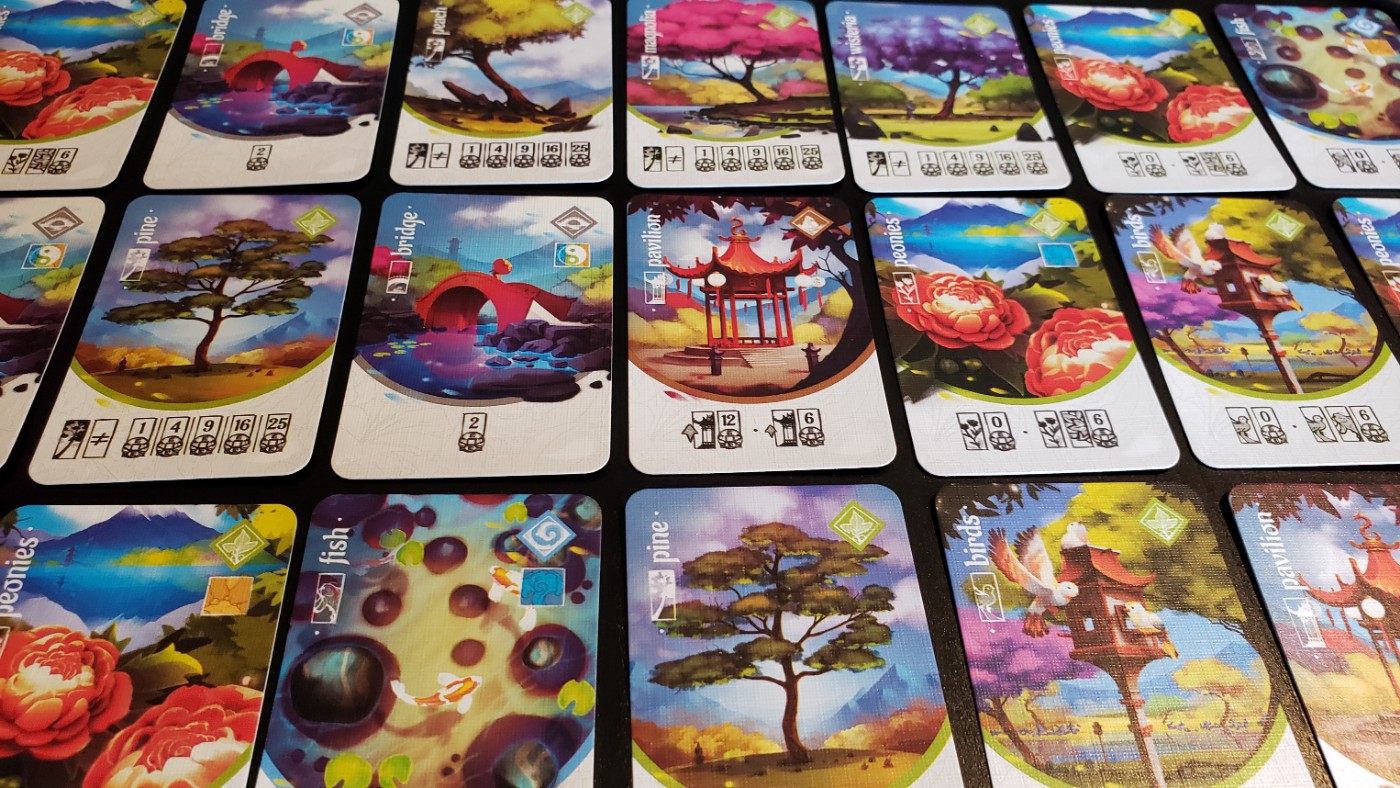
Each player has a set of 4 lantern tokens which work as special abilities during the game. In a pinch, these lanterns can really help you create a big turn by allowing you to place 2 tiles, add 2 decorations, or even adjust the location or direction of your nobleman.
The game ends when there are only 3 scenery tokens left on the board or when one of the four tile stacks run out. Players then calculate their prestige points from the coins they received, bonuses from decorations, and points found on the nobleman cards.
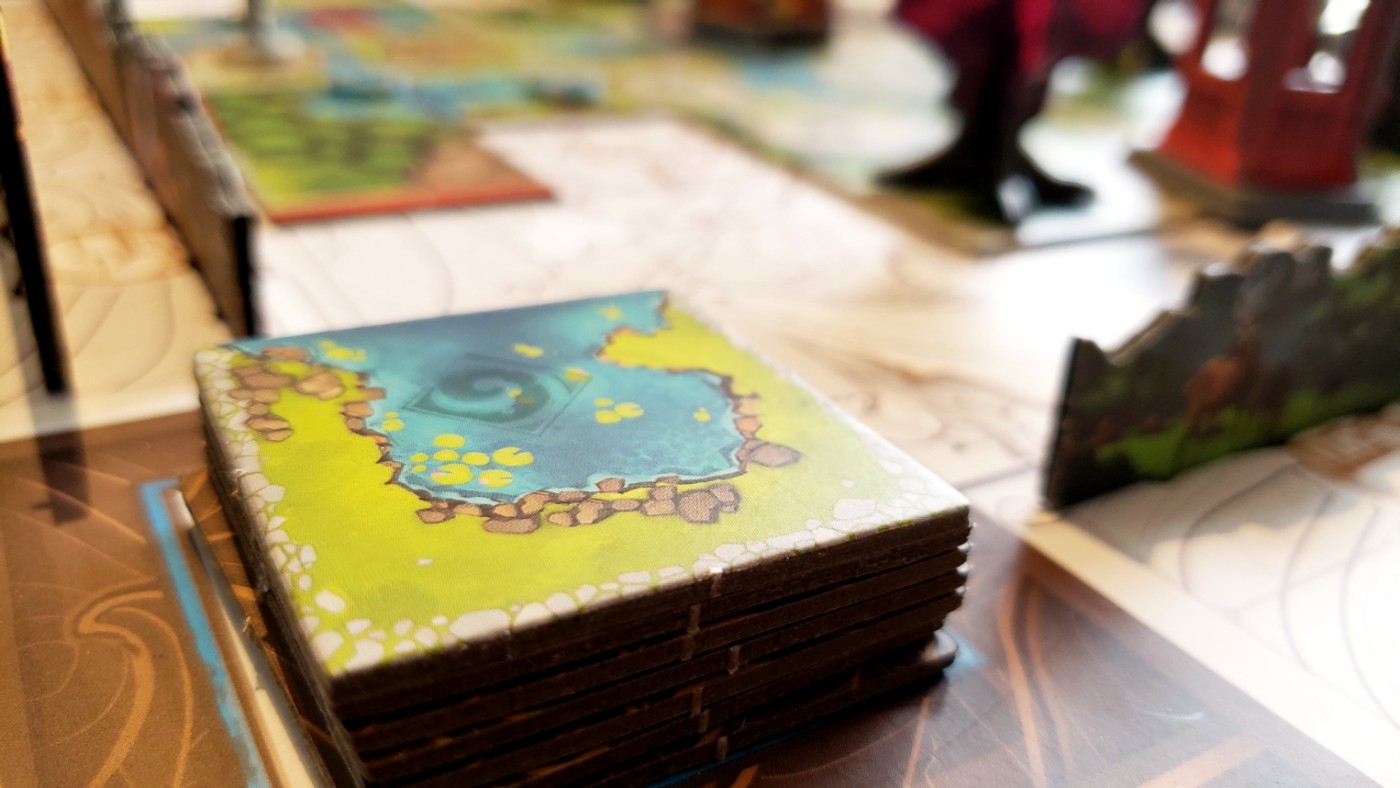
A Thing of Beauty
Even though we’re only half way through 2020, I can’t imagine another game usurping Tang Garden in the “Most Beautiful Game” category. Before you even open the box, the art from Matthew Mizak pops off the white cardboard. The subtle detail on the empty board as you build out the garden has a zen quality to it that feels more like art than game board. I love how the designers paid close attention to the details of the scenery around the board. Each cardboard panel transitions into the next. When we finished a game the other night, I left the board on the table because I knew I would enjoy looking at in the morning.
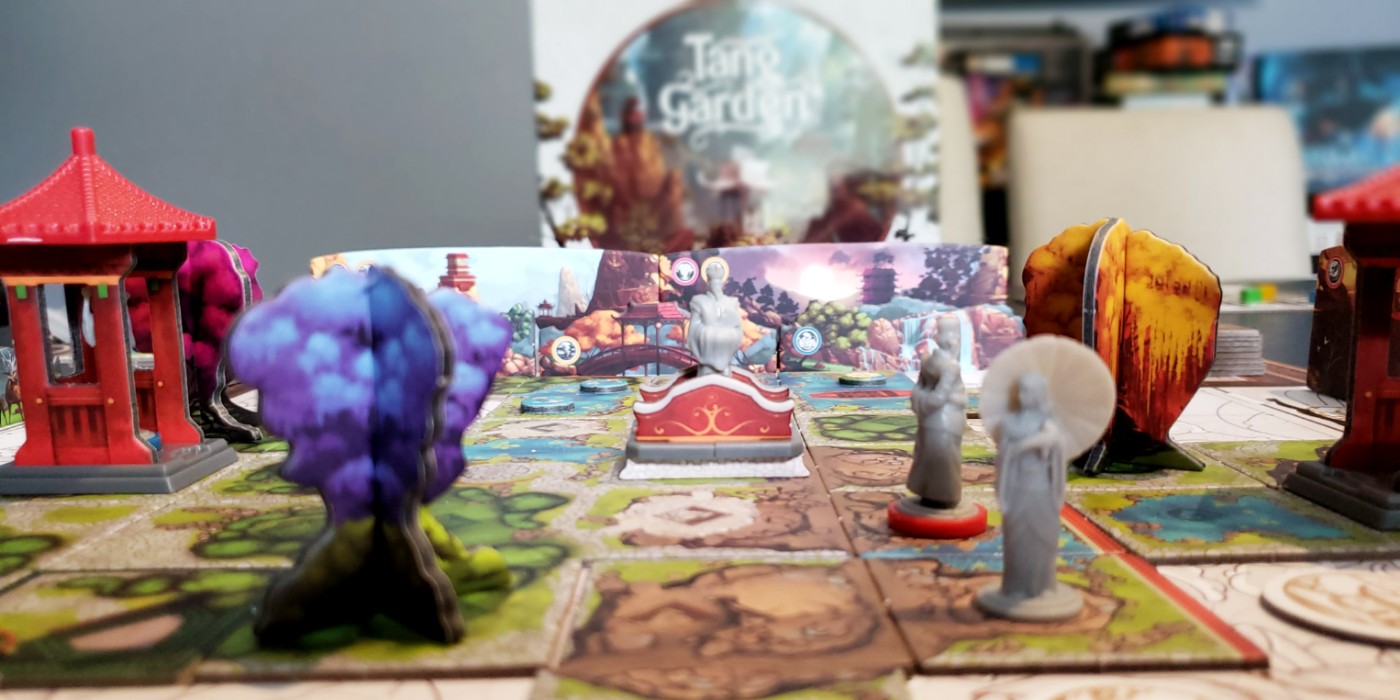
Tang Garden has a lot going on but it never feels like too much. It fits very nicely in that mid-weight category where our family loves to game. Since every aspect of Tang Garden is so high quality, you actually feel like it should be a more difficult game than it is. I need to mention this because I heard the words “over produced” after teaching a friend how to play. This is a premium game, and while the mechanics could work using lower quality components, I honestly wouldn’t want it any other way.
During the course of an hour, this garden takes shape and the final presentation is something that’s worth stepping back and looking at.
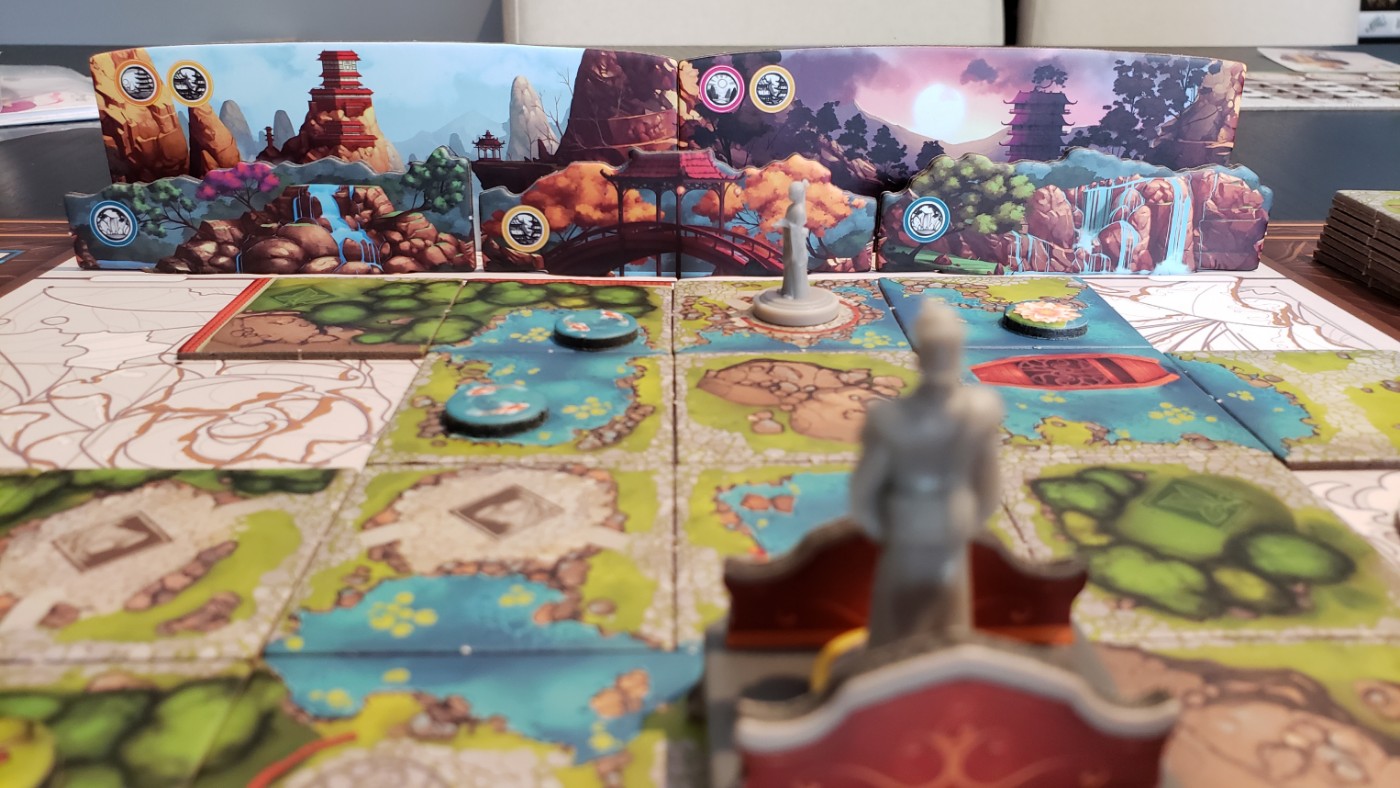
If there’s any aspect of Tang Garden that was a miss for us, it would have to be the iconography. The icons that appear on the landscape pieces, decoration cards and nobleman cards are a bit of an issue. These stylized icons are too small for the detail they include and have led to people asking “what’s that?” in every game we’ve played. It took a couple plays to be familiar with these icons without having to jump back into the rule book.
The nobleman miniatures are fine. While they look great standing in the garden throughout the game, the minis lack detail and may be disappointing to someone who love miniatures. They are far better than cardboard cutouts but not the best quality around.
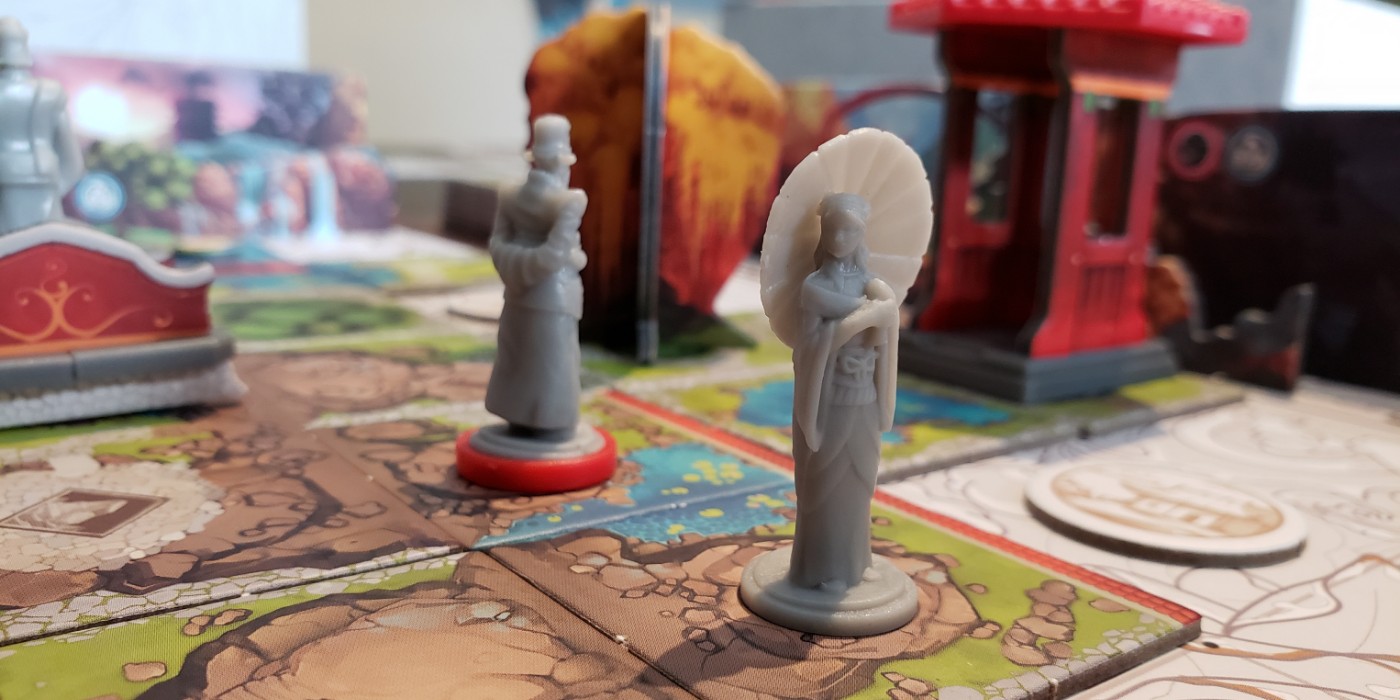
There is a peaceful and tranquil quality to the gameplay of Tang Garden. It’s a game that is visually impressive on so many levels and has enough strategy to keep players coming back for more.
You can purchase Tang Garden at your local game store, online through Amazon or on Miniature Market.
Lucky Duck Games provided us with a retail copy of Tang Garden for this review. This in no way influenced our opinion of the game.
Highs
- Top-notch components and beautiful art throughout
- Excellent medium weight tile placement game
- Smooth and tranquil gameplay fits the theme well
- Balancing the 3 elements lead to more visitors to the garden
Lows
- Large table necessary to fit this beautiful game
- Iconography is small and can be a struggle to decipher

